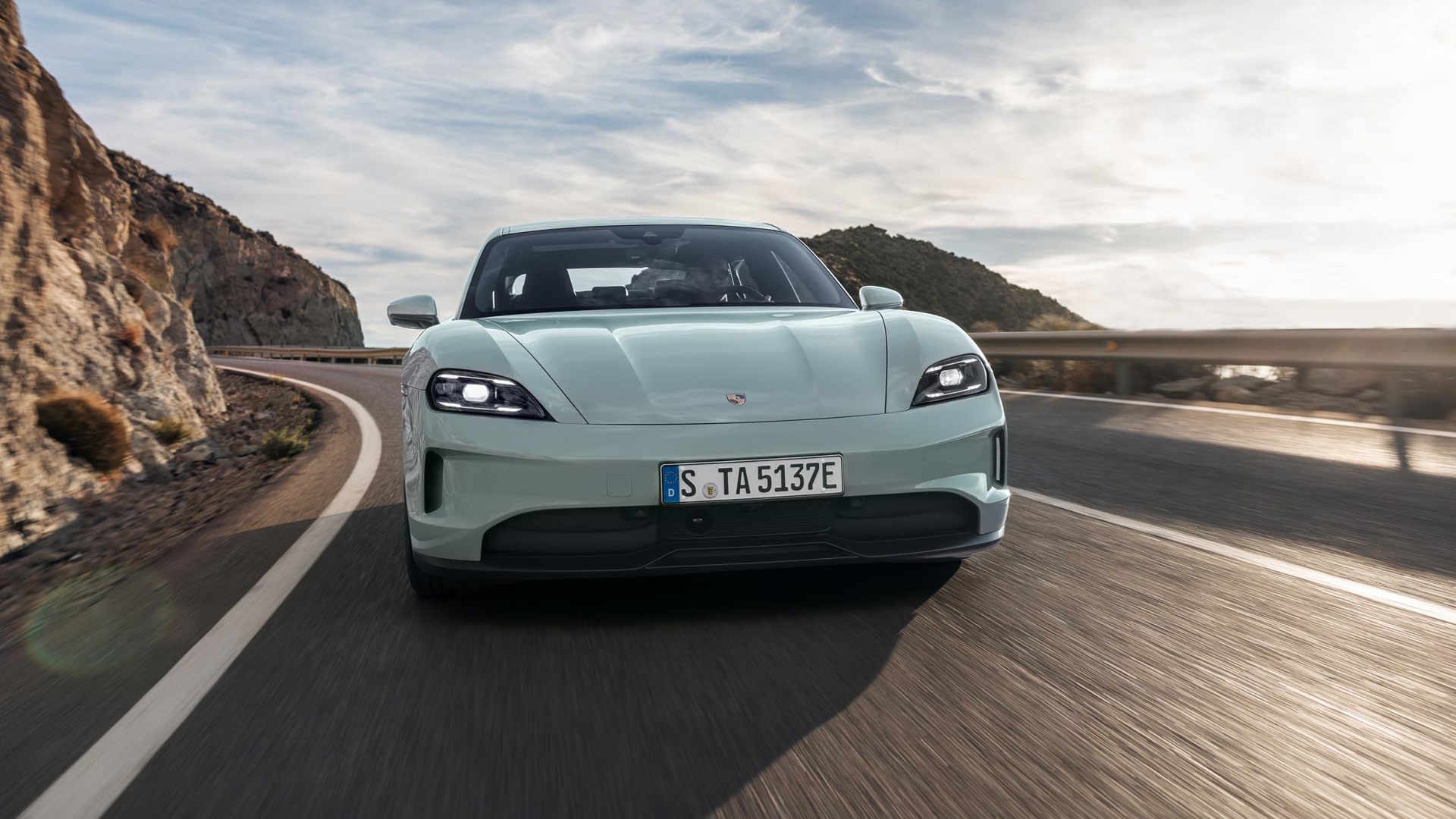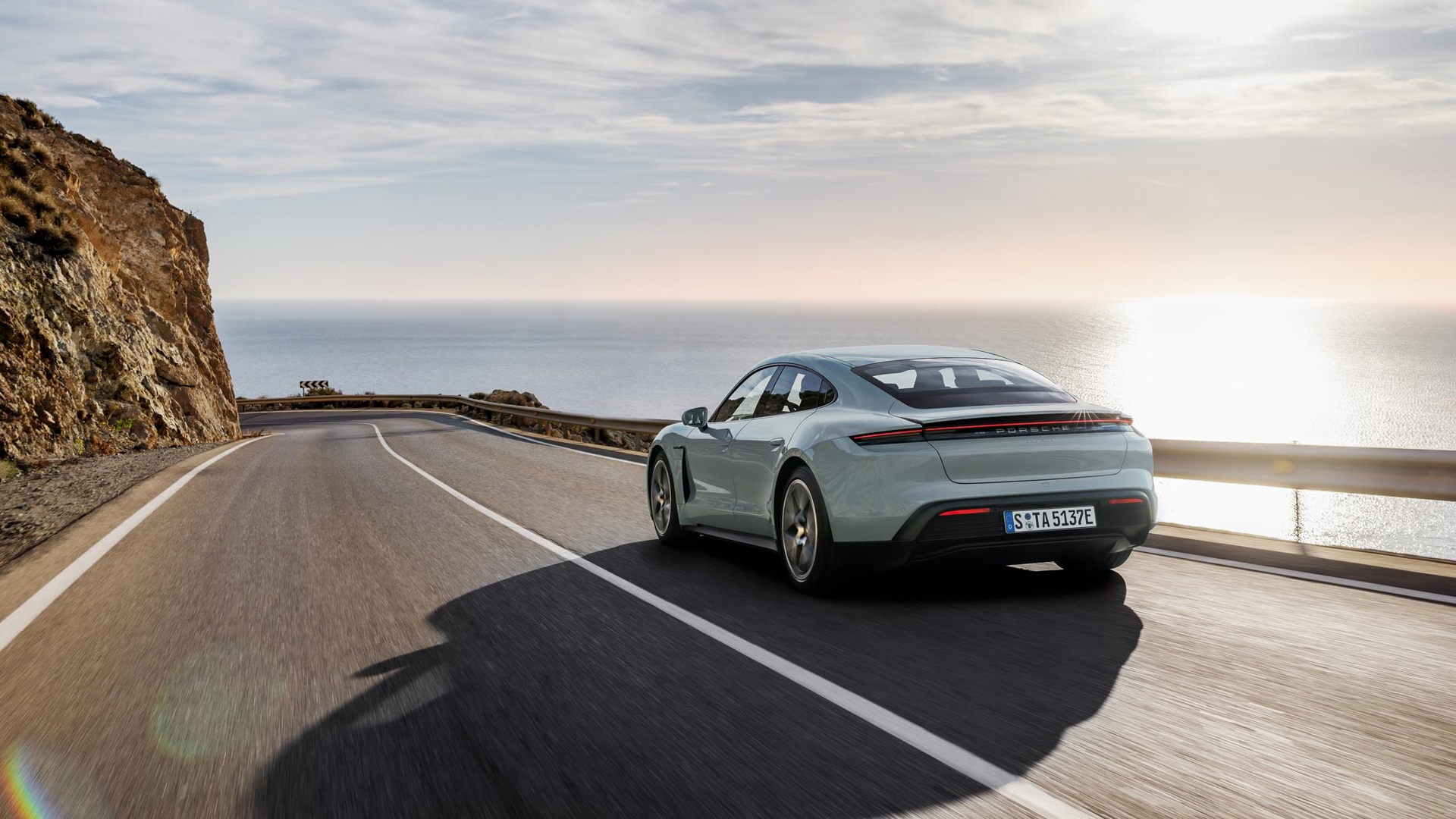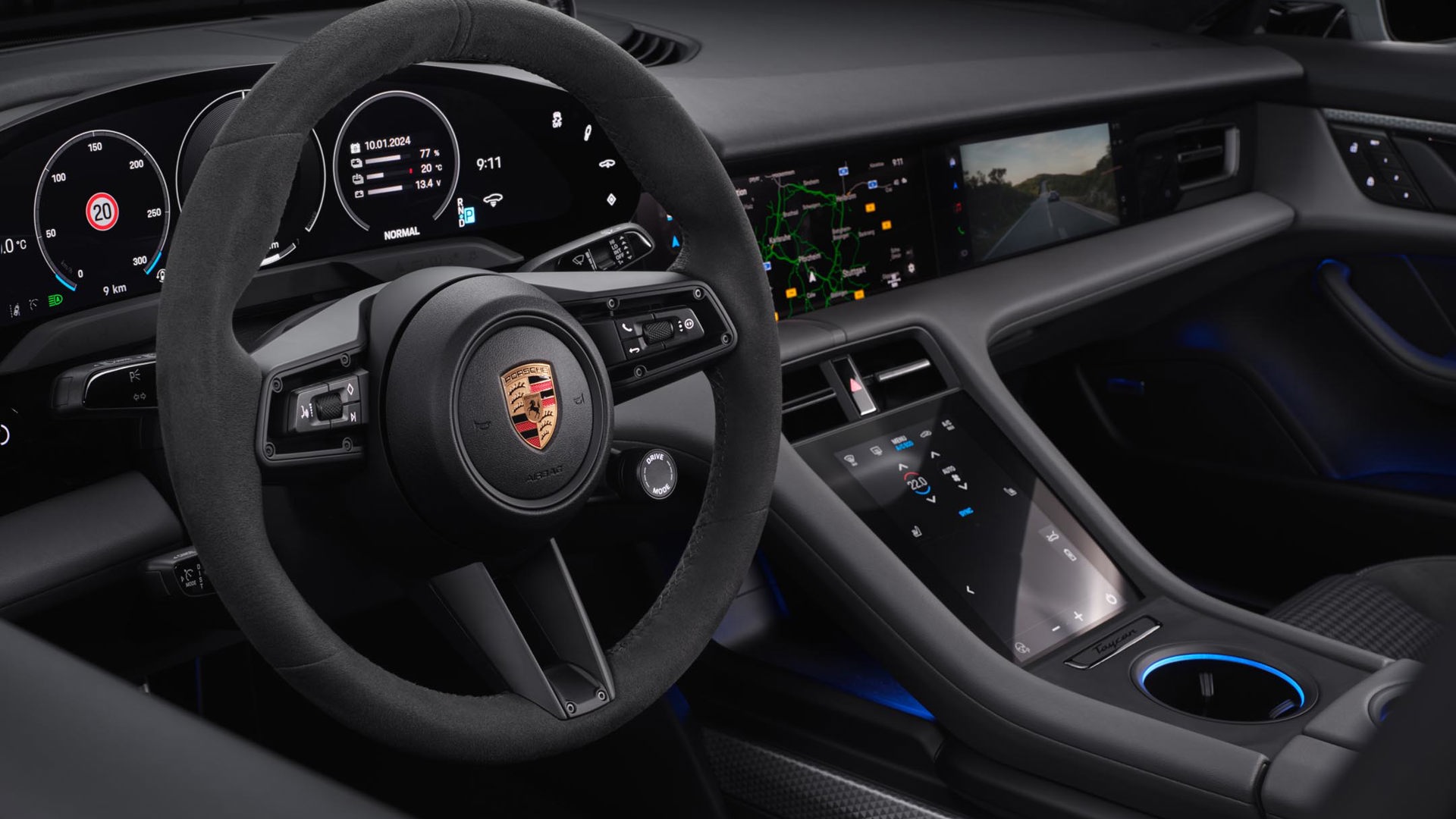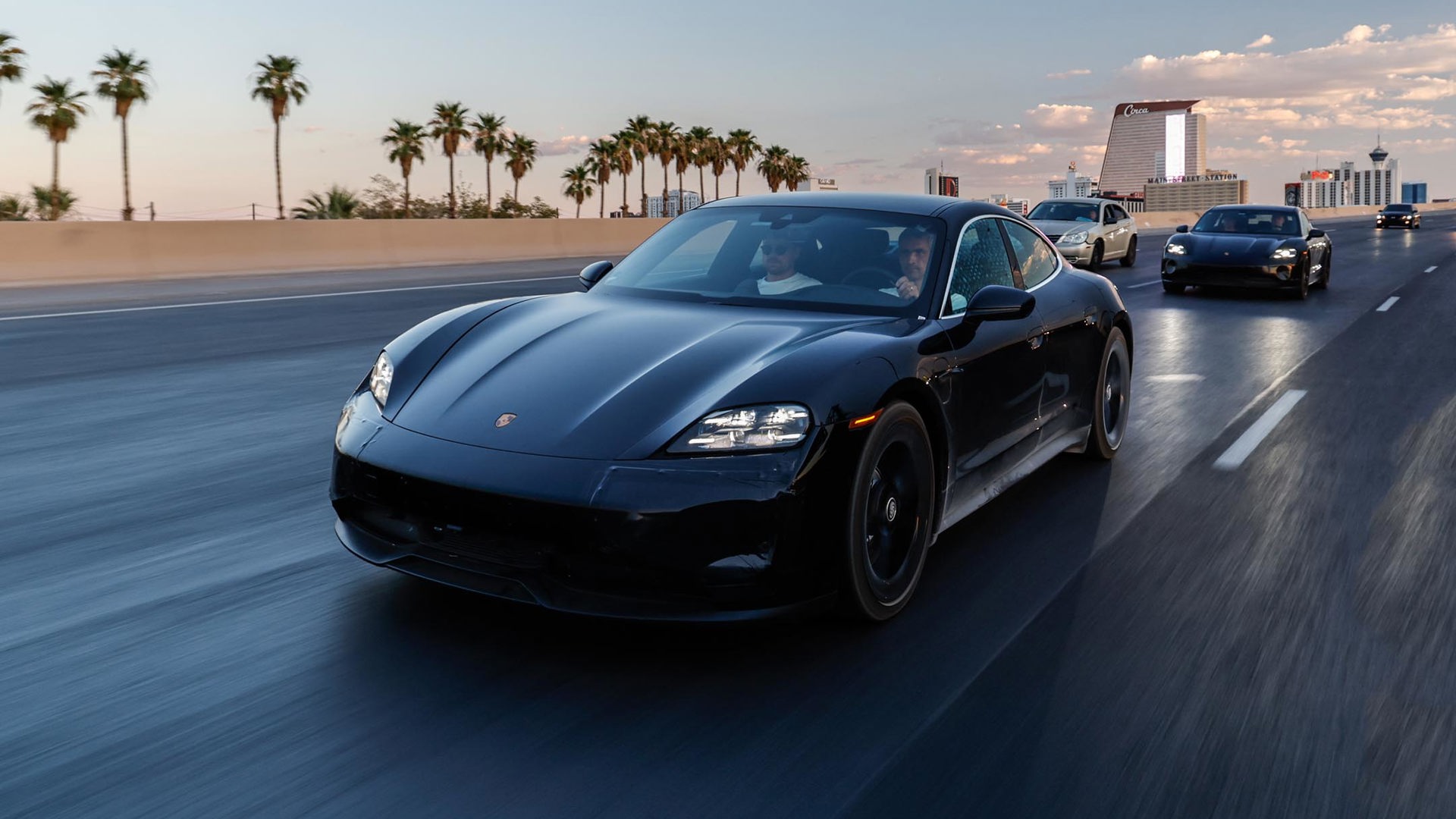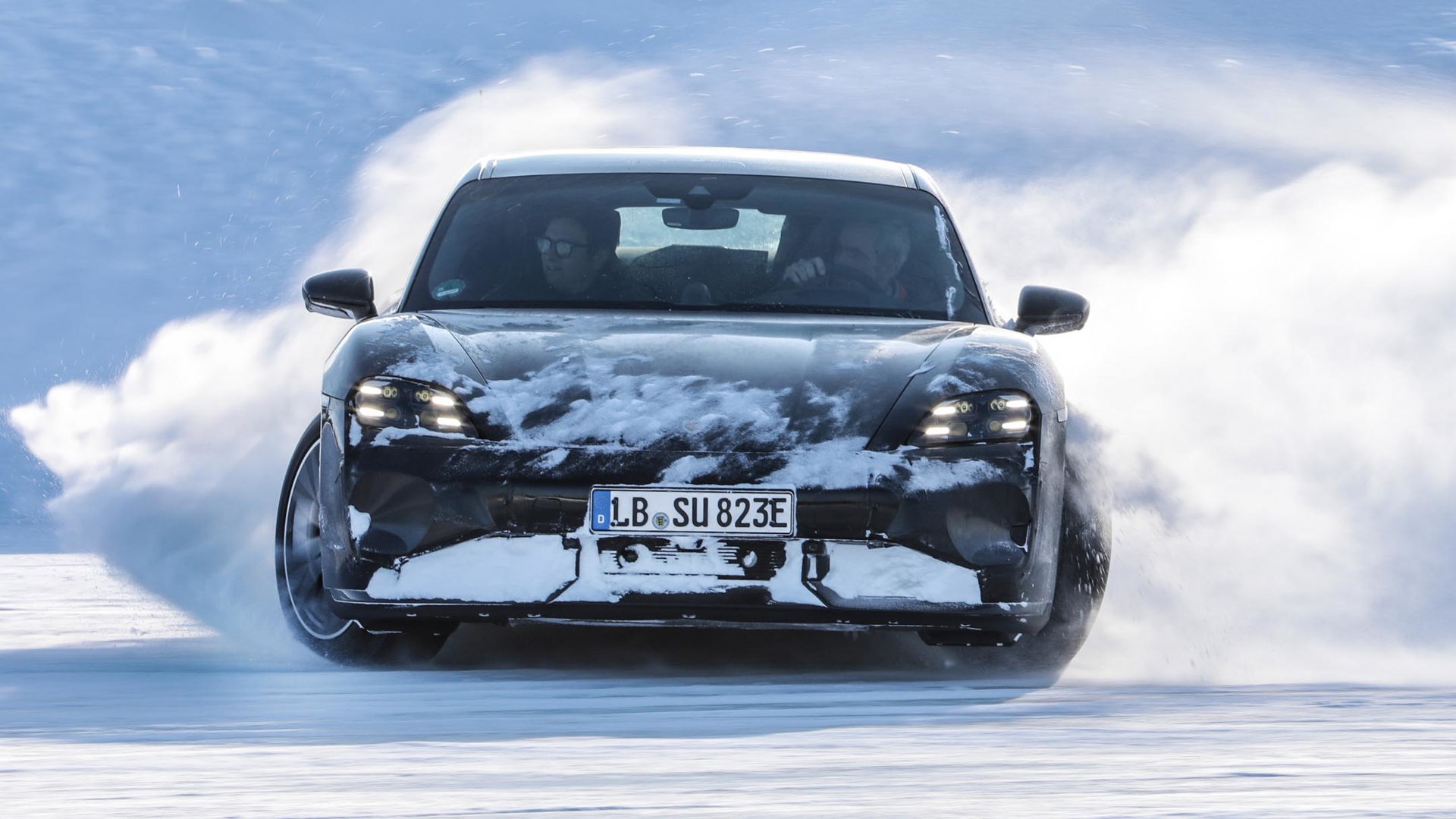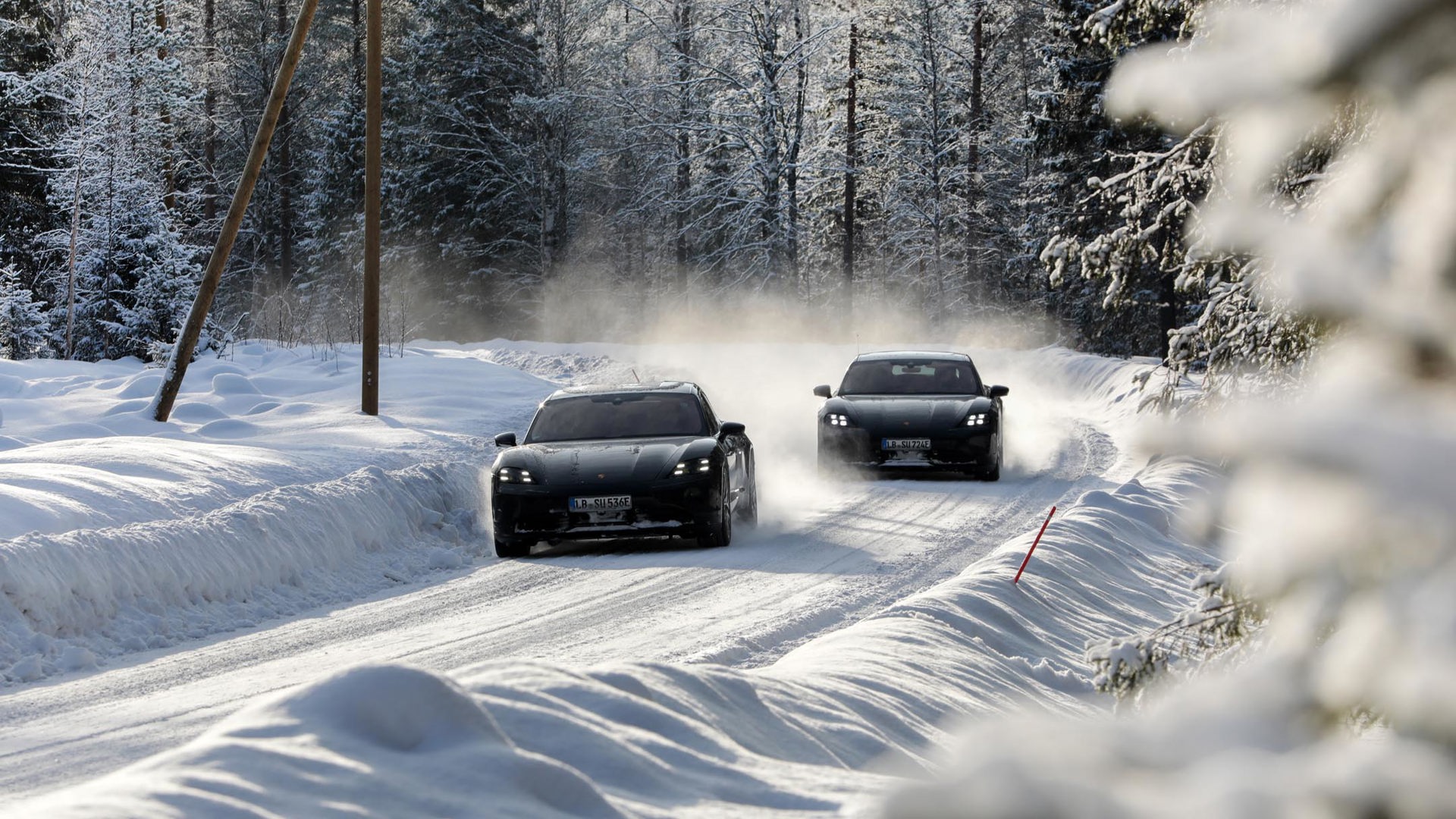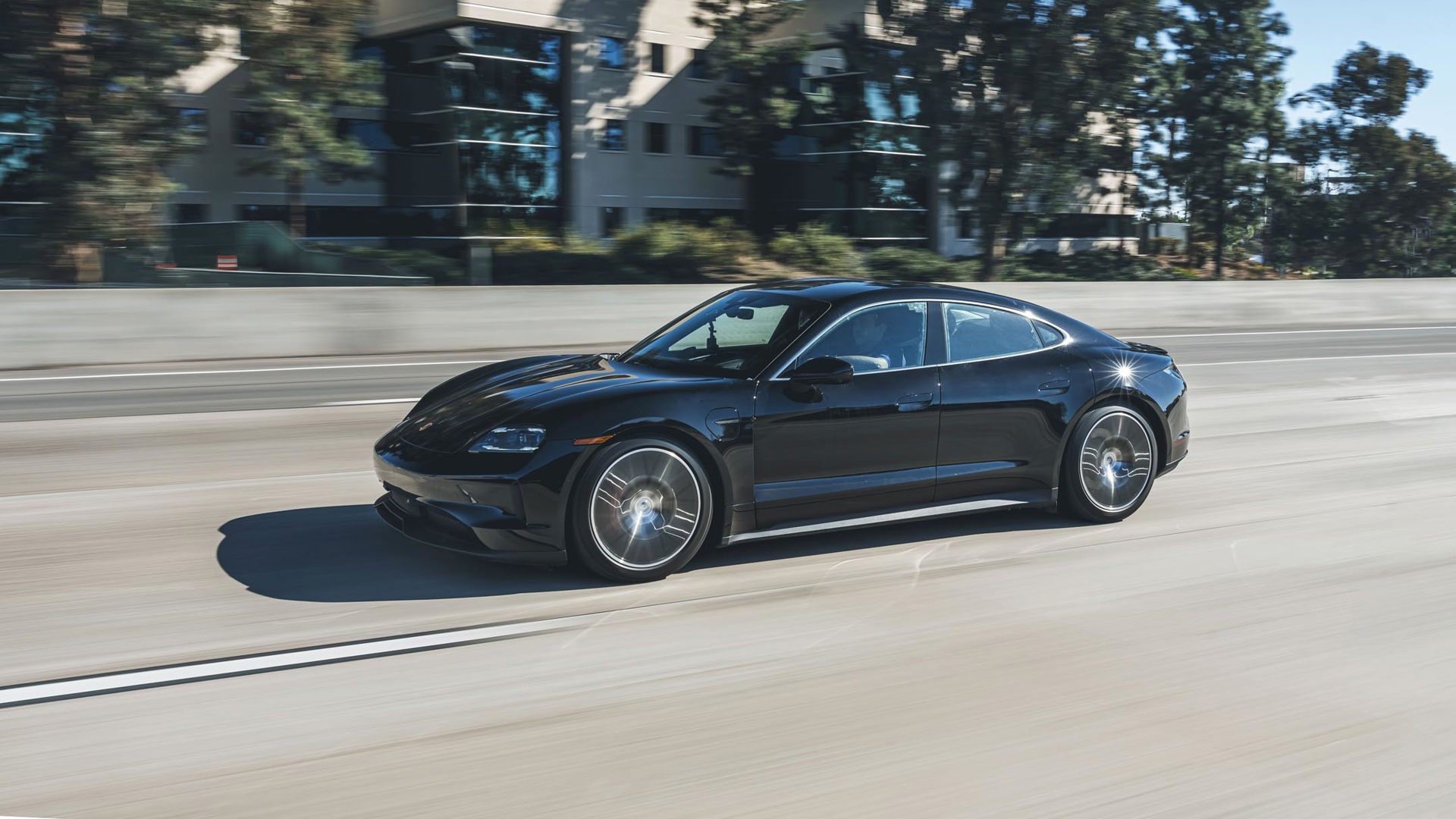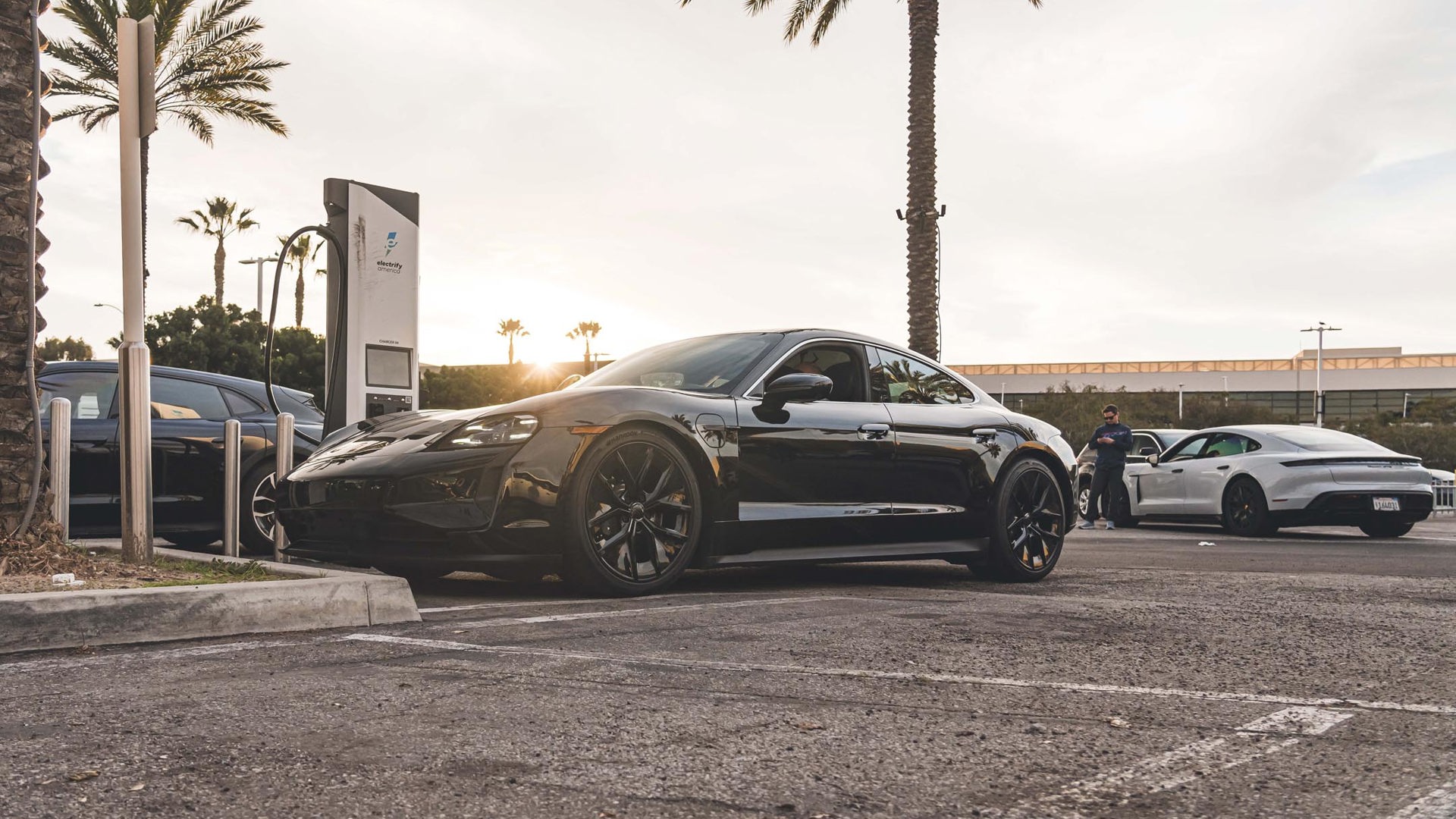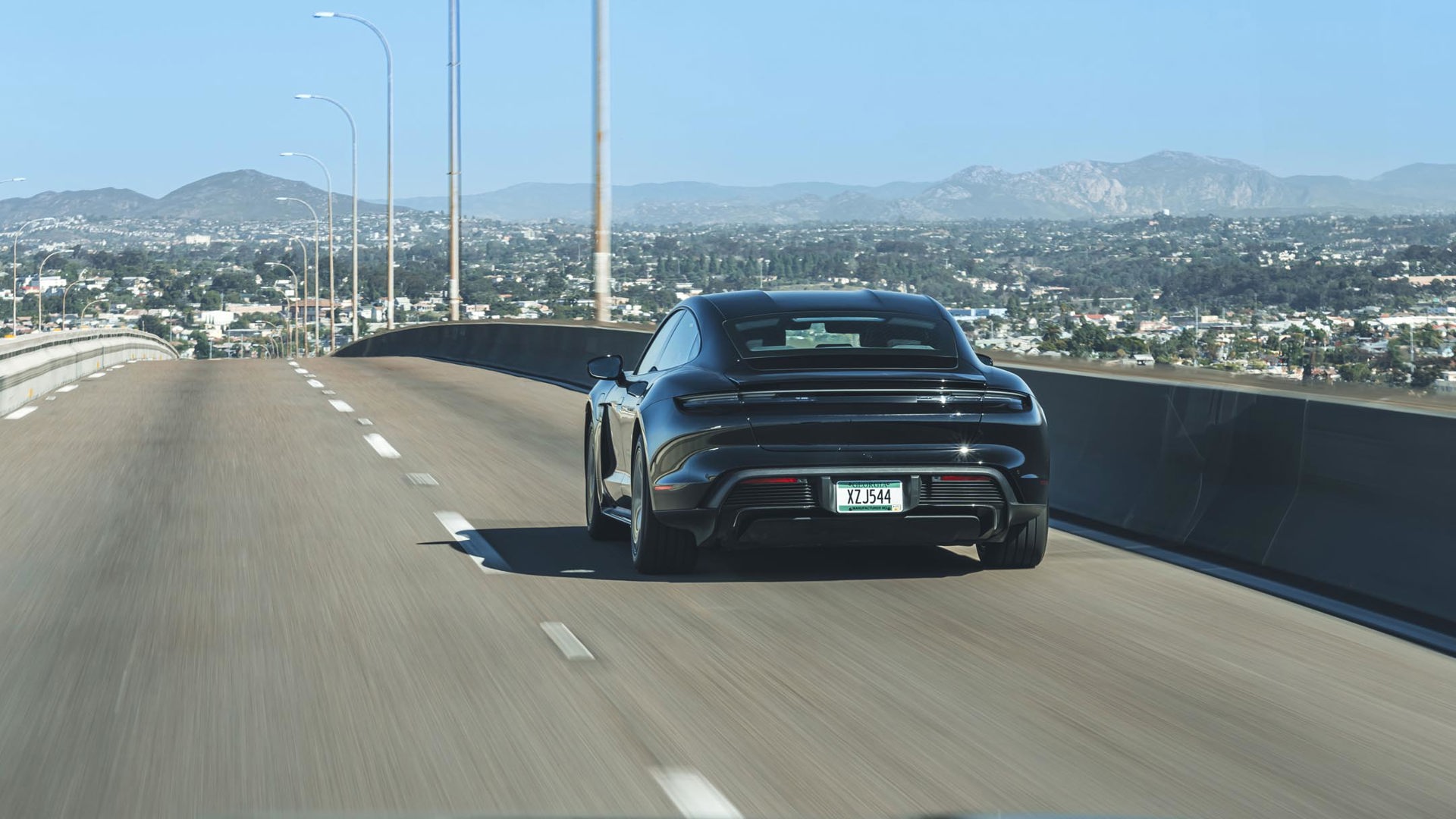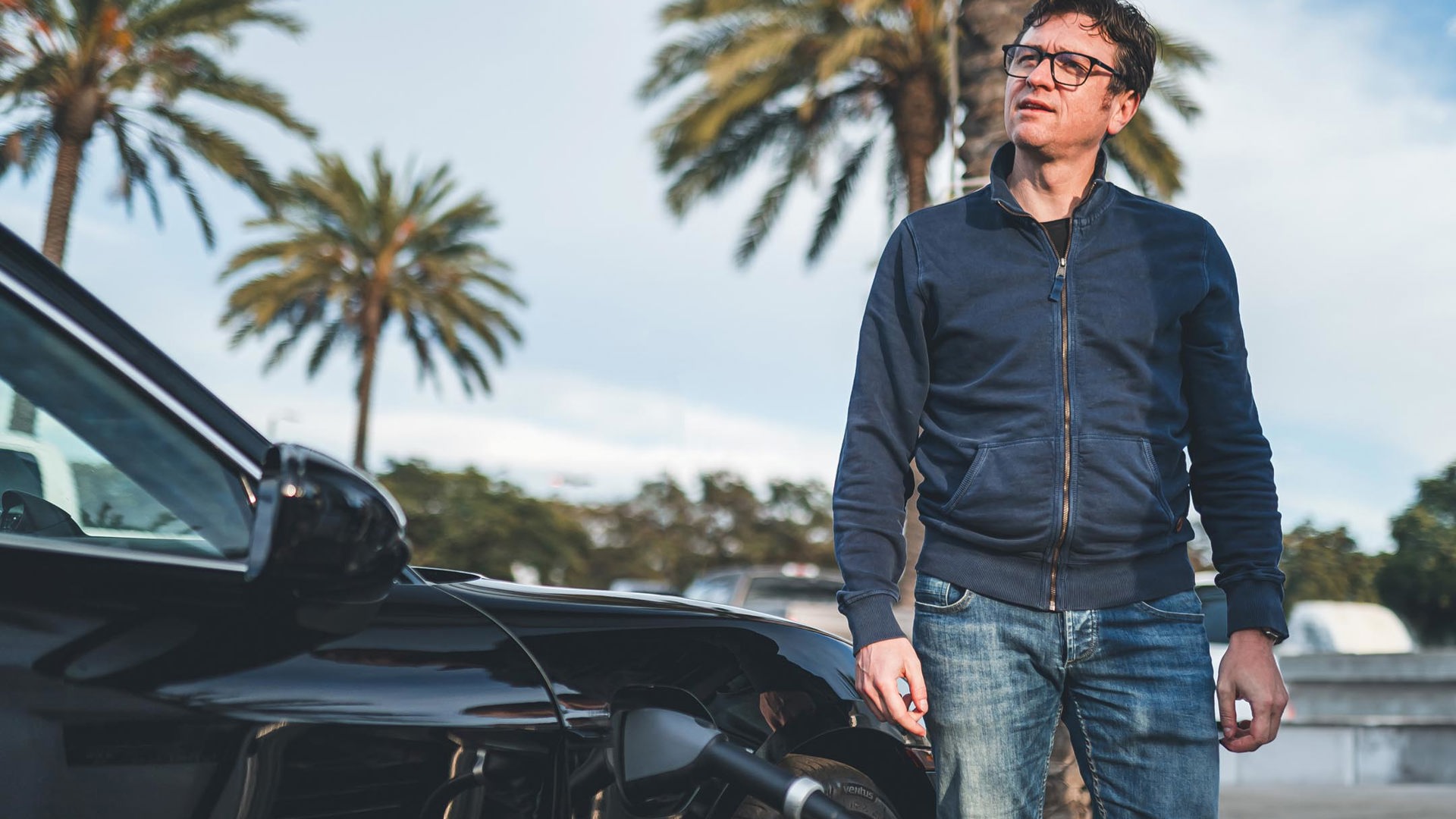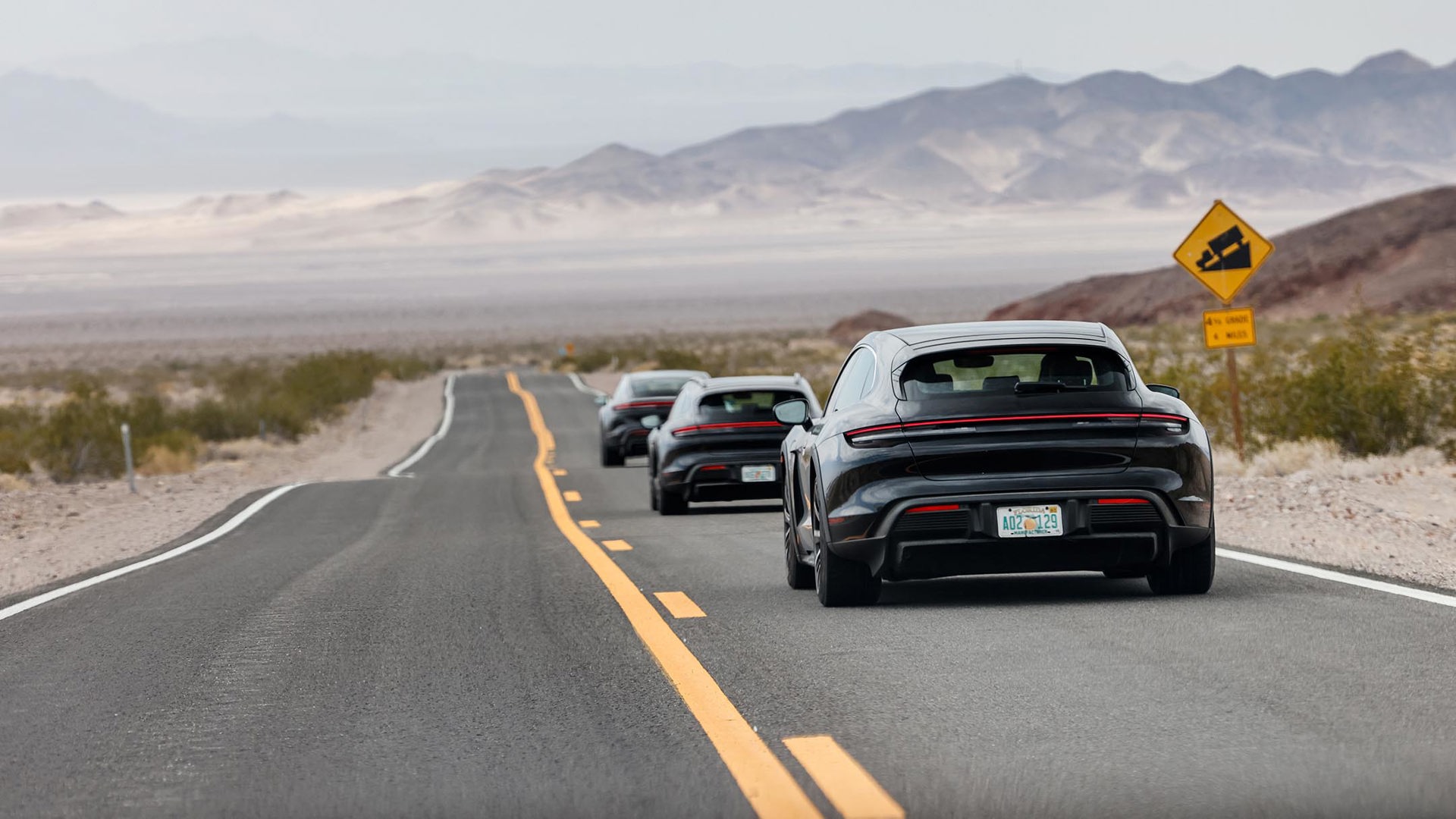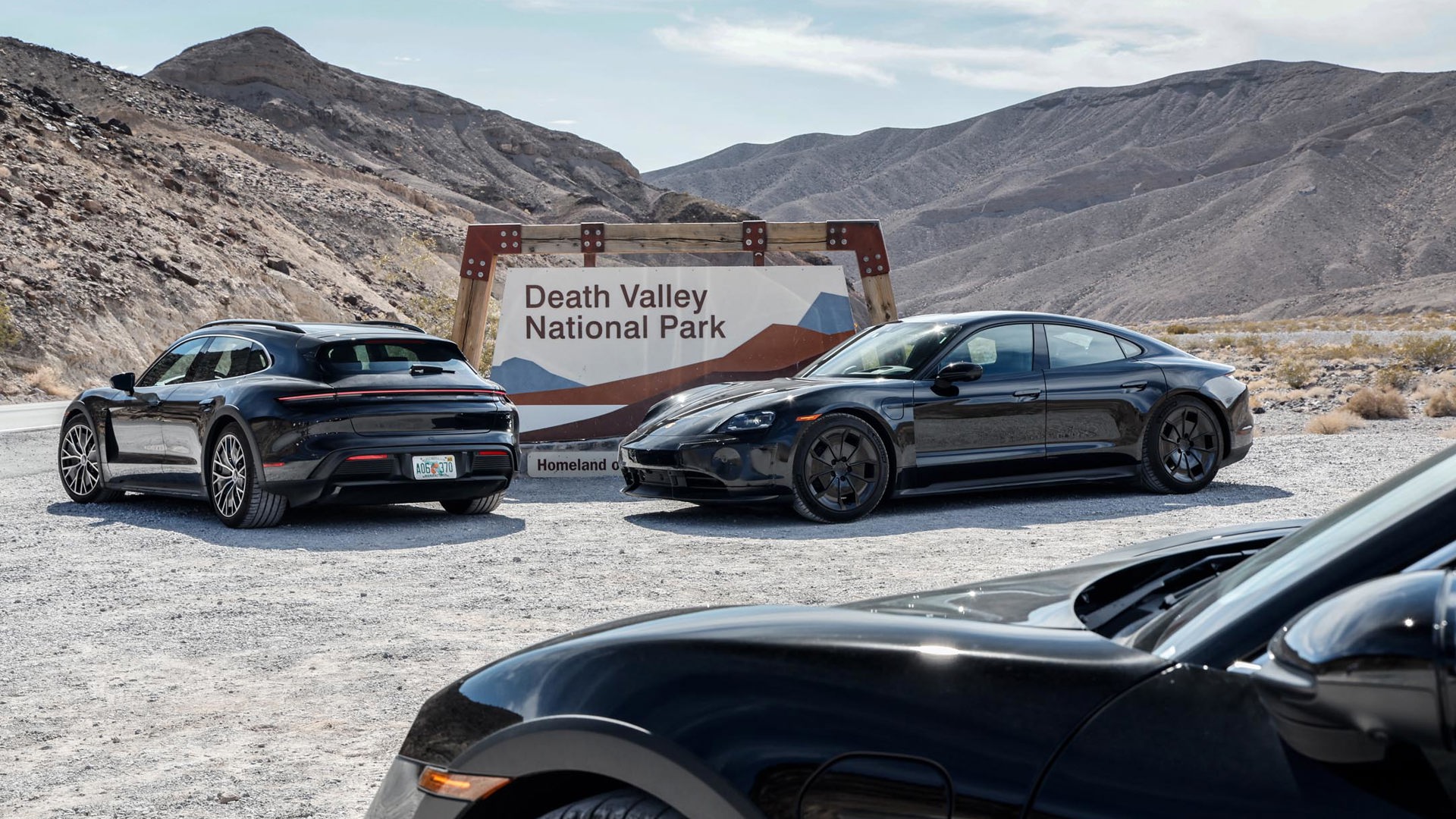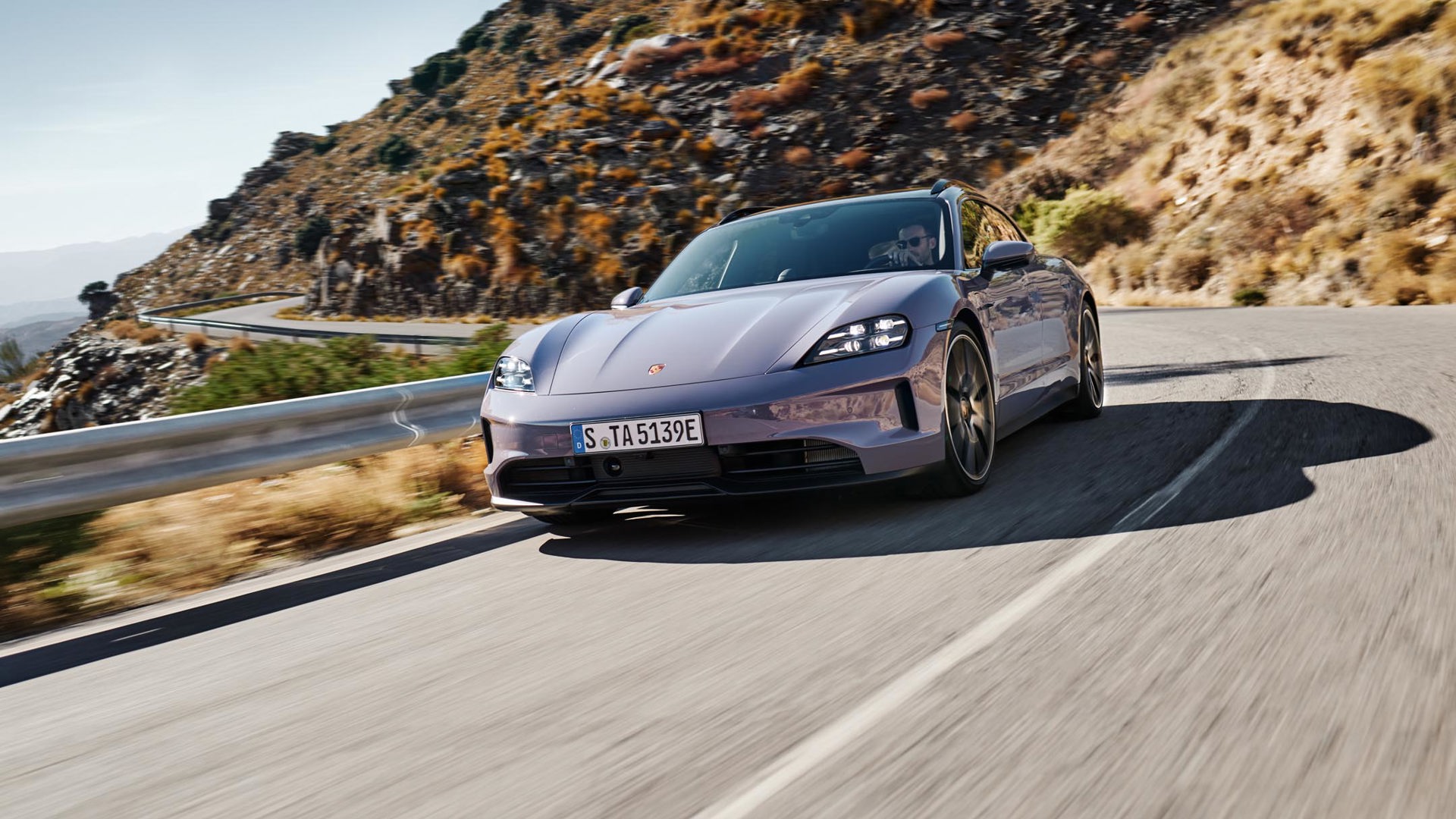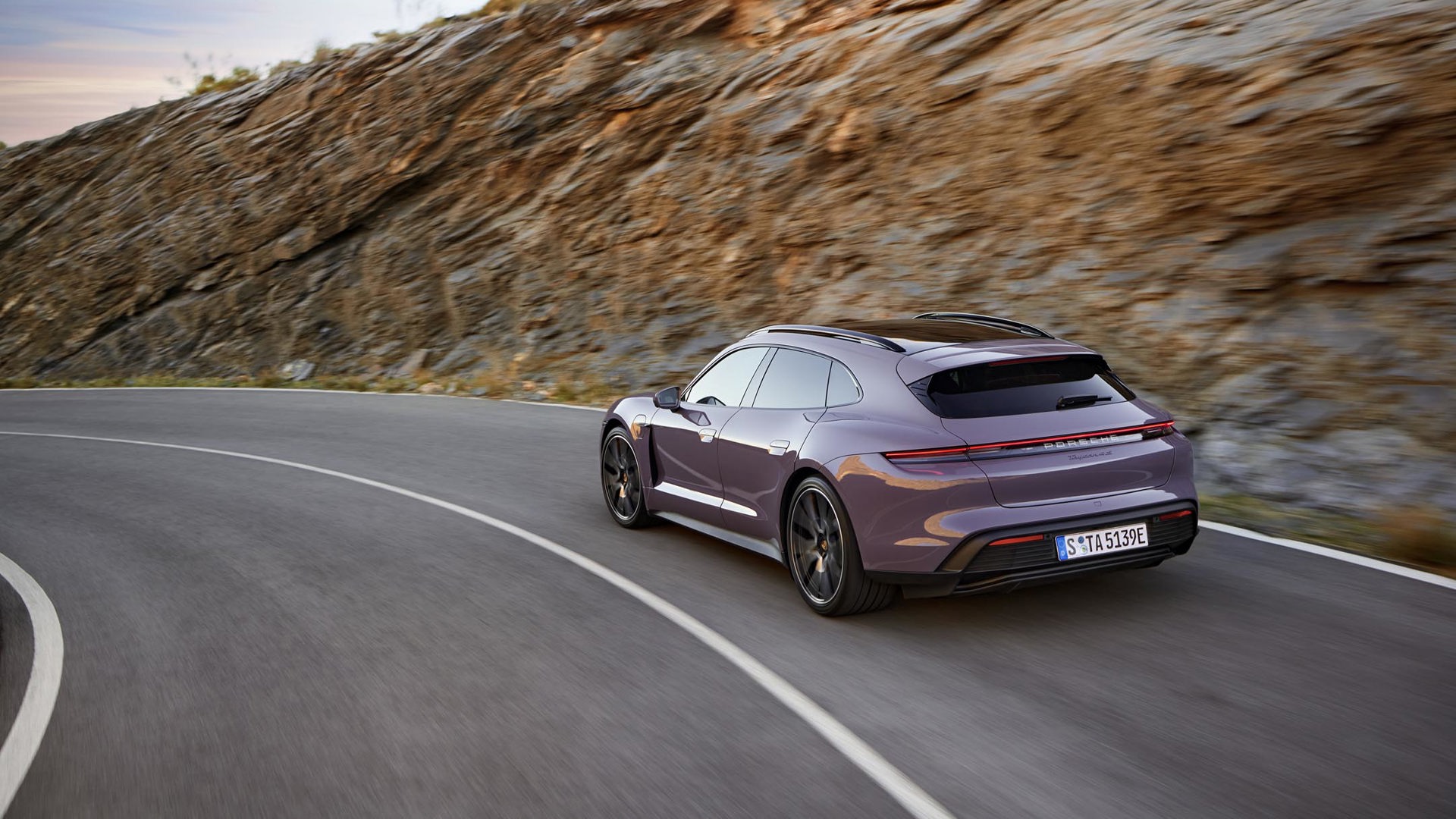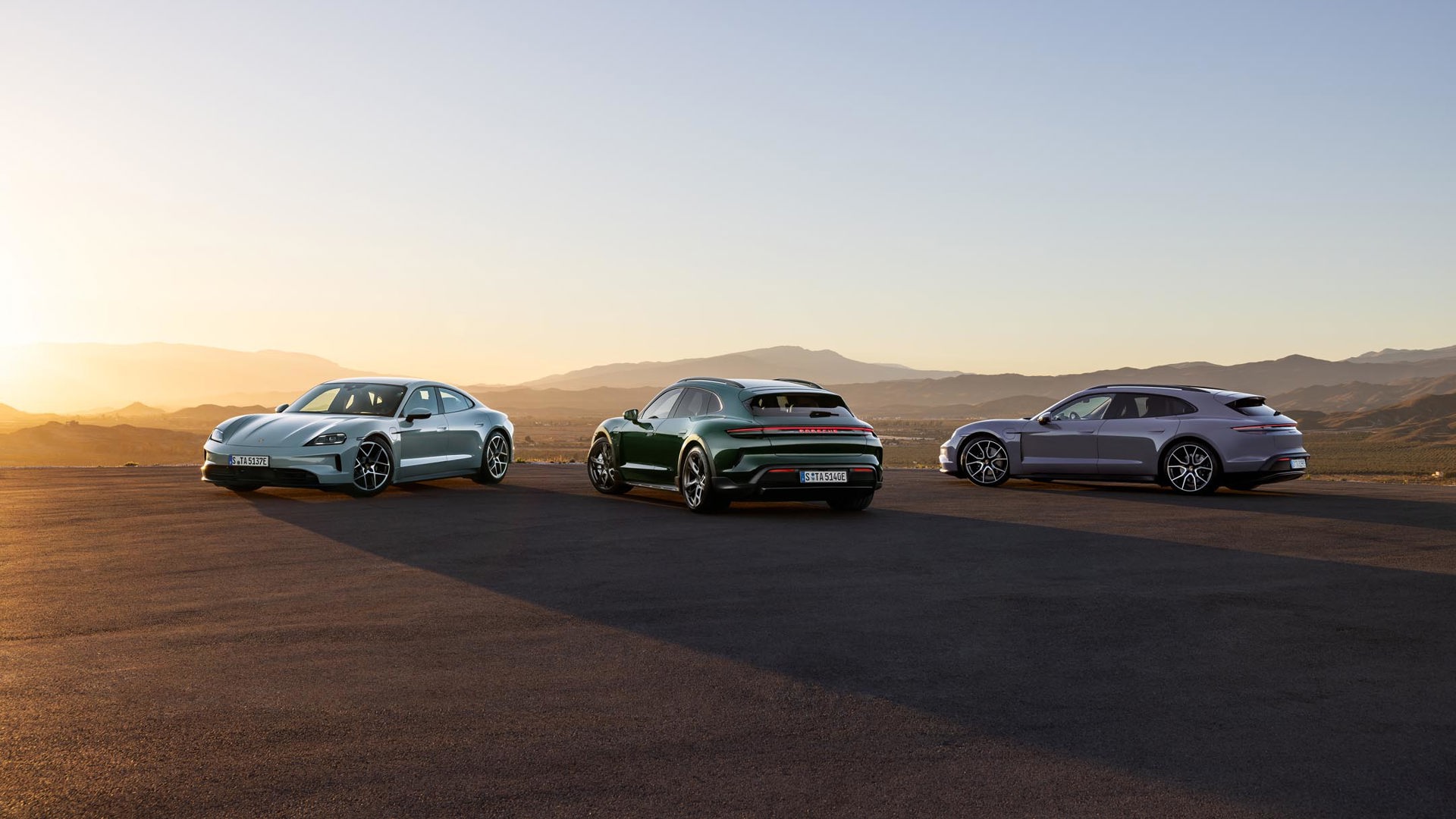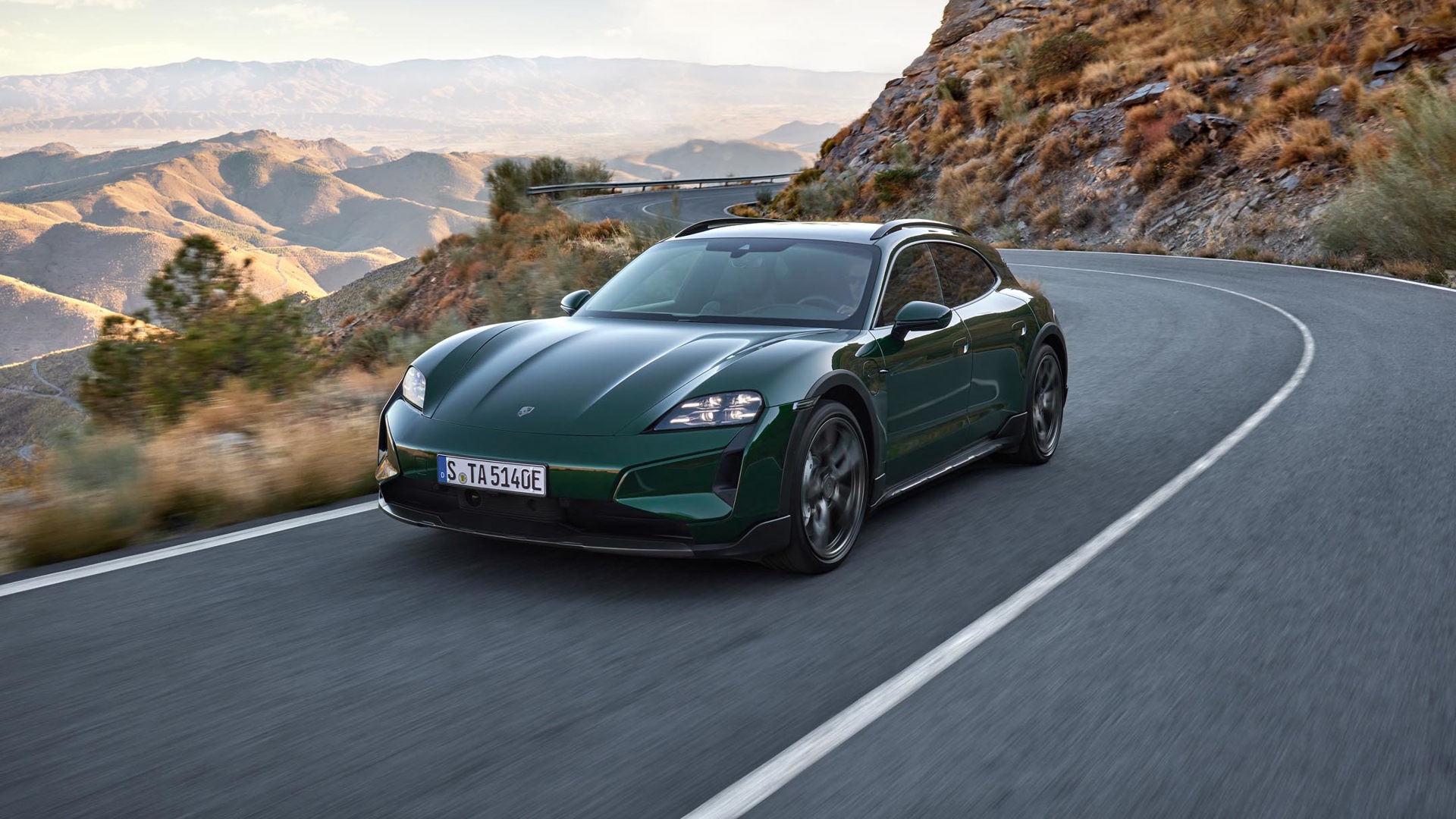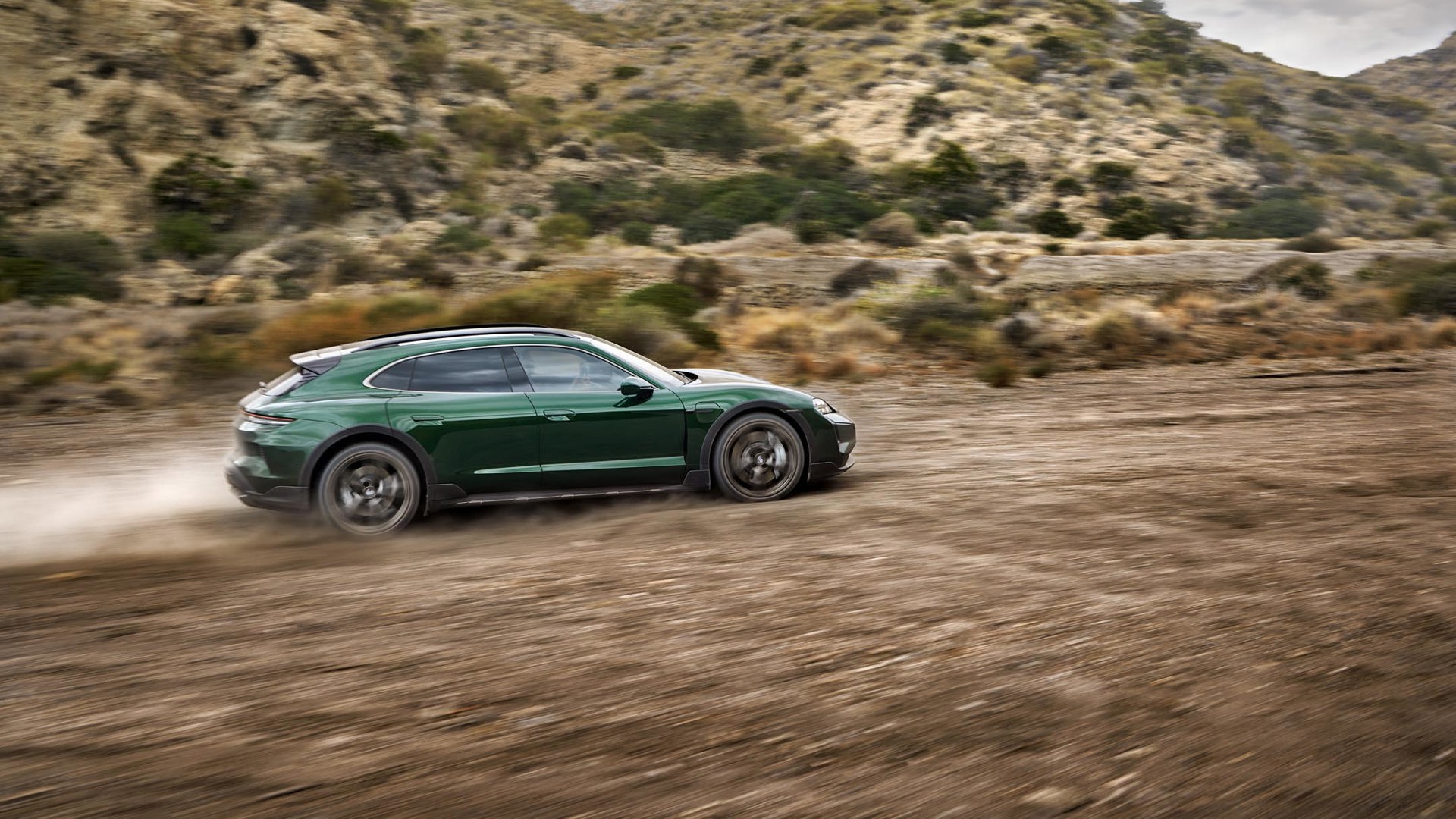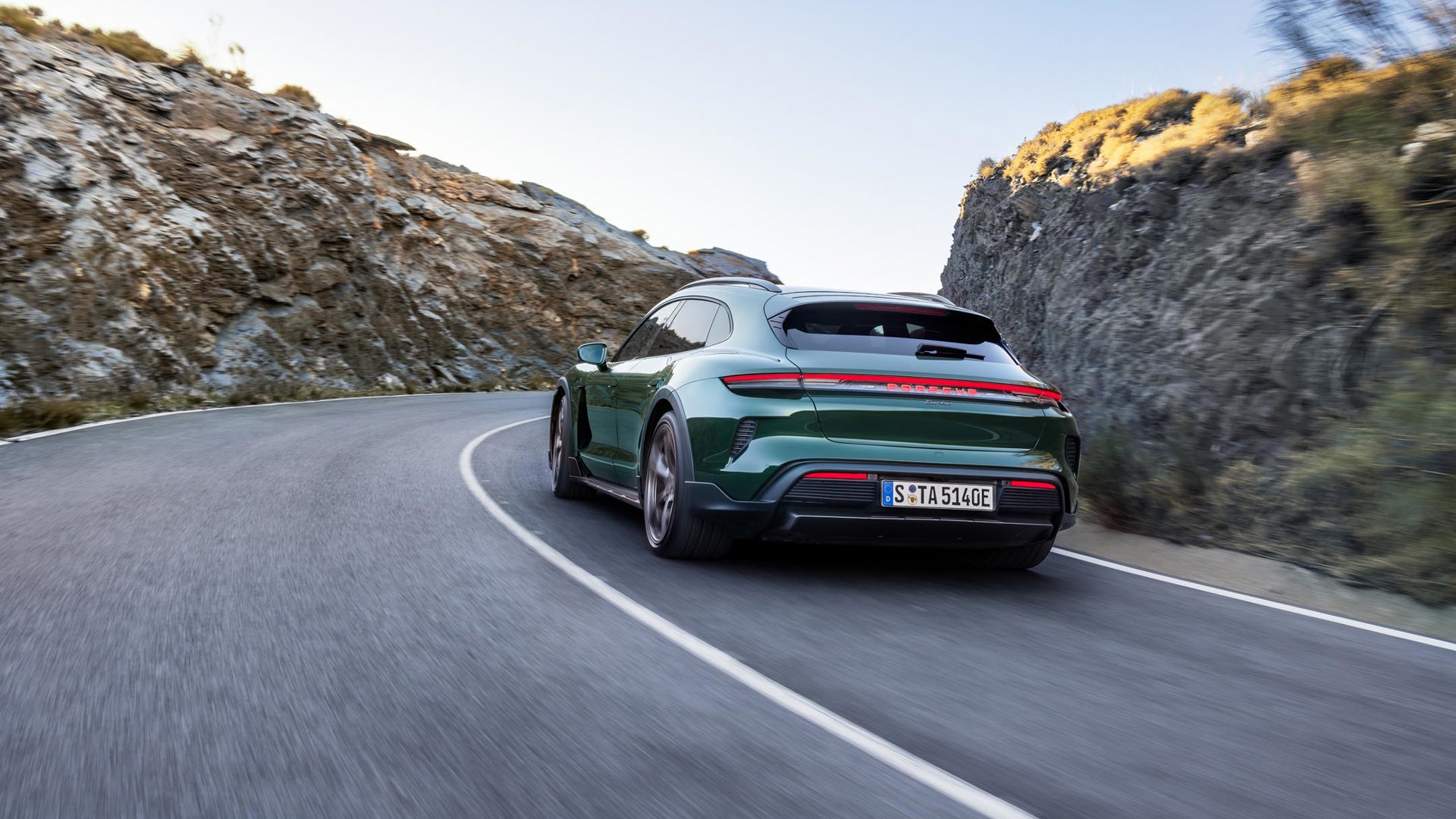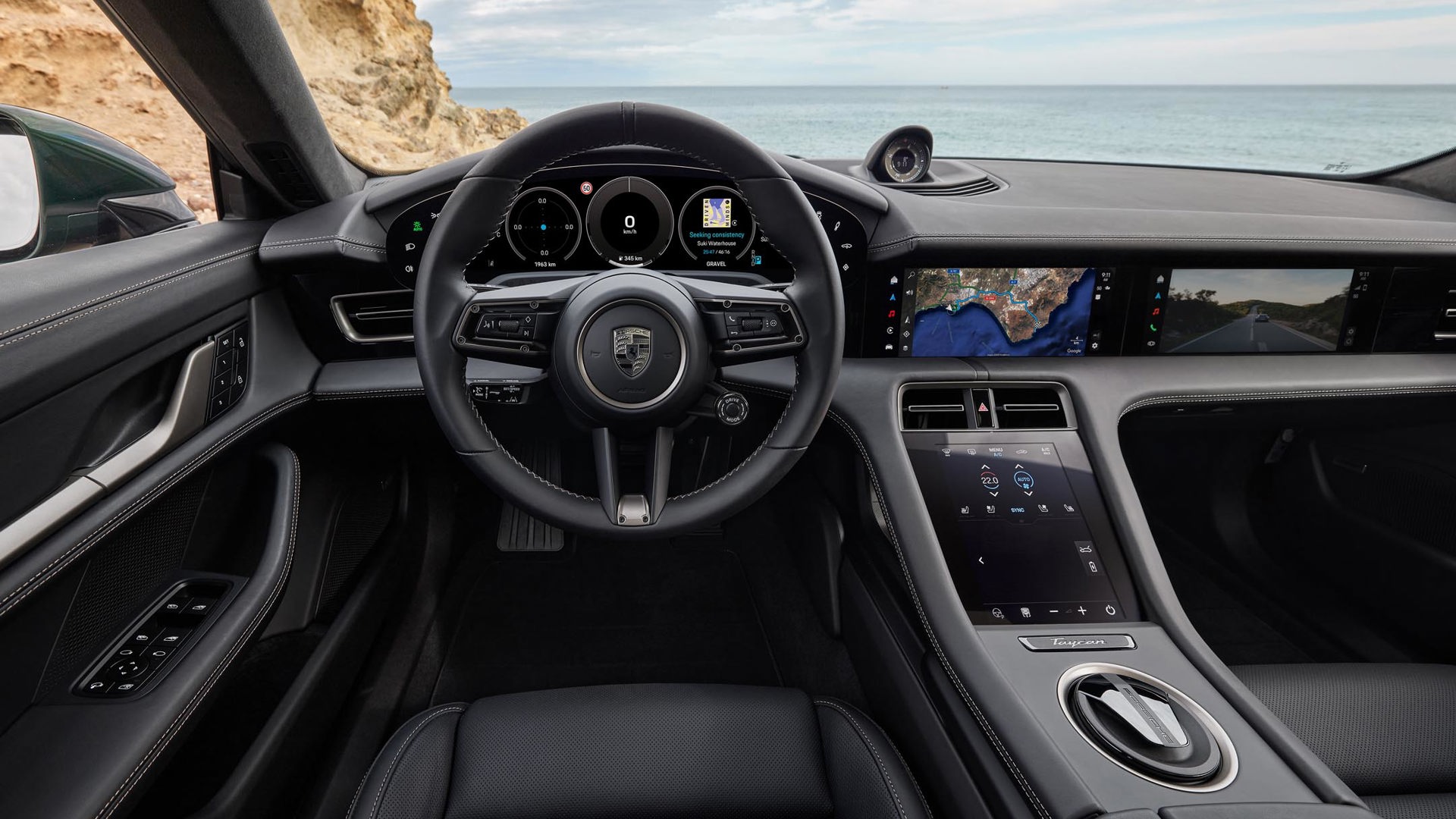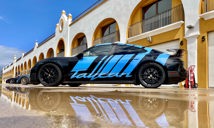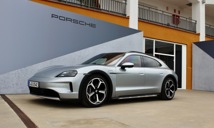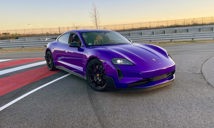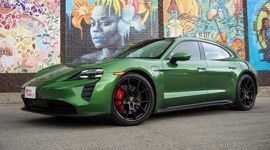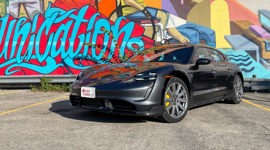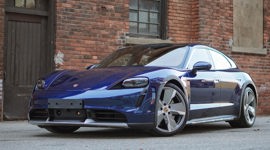As the snow started to fall faster, the engineer behind the wheel of the well-used prototype didn’t let up.
The pre-production 2025 Porsche Taycan clung to the wet, winding pavement in spite of the startling speeds we were travelling along the narrow side roads near the brand’s expansive development campus near Weissach, Germany. Perched in the passenger seat with a tight grip on the door, I couldn’t help but be impressed – though not surprised – by the promise of the next evolution of Porsche’s first electric vehicle (EV).
The development team was already hard at work on this next-generation car before Canadian dealerships received their first allotment in 2021. It’s typical of Porsche to take a machine that’s already receiving glowing praise, make a series of nominal changes, and improve it significantly for its next iteration. (Need proof? Just look at the last 60 years of the 911.)
Styling Update
Although this could be considered a model refresh, it’s a very extensive one that affects the Taycan’s features, form, and performance both in terms of driving dynamics and as an electric car. Built on the existing Taycan’s platform, the new model’s look is only modestly updated with subtle tweaks front and rear that’ll take a keen eye and side-by-side comparison to pick out. The fenders have been flattened a bit for increased aerodynamic performance, but most notably, the headlights are squatter and have been smoothed into the bodywork more compared to the outgoing model.
The new lights aren’t only prettier, they also make use of Porsche’s astonishing HD Matrix system (yes, we get them in Canada, unlike our neighbours to the south). With 32,000 individually controlled pixel elements that are constantly adapting to the terrain, road, and traffic, they can throw light more than 600 metres ahead while not blinding everyone else in the process. Having experienced these lights in the new Cayenne, I can confirm they are nothing short of revolutionary in terms of automotive illumination.
Porsche’s stylists have set out to distinguish the range-topping Taycan Turbo and Turbo S models with trim-specific colourways for side skirts, model designation, wheel faces, and other moulded parts finished in “turbonit” – a titanium-like hue that’s also applied to the Porsche crest on the nose.
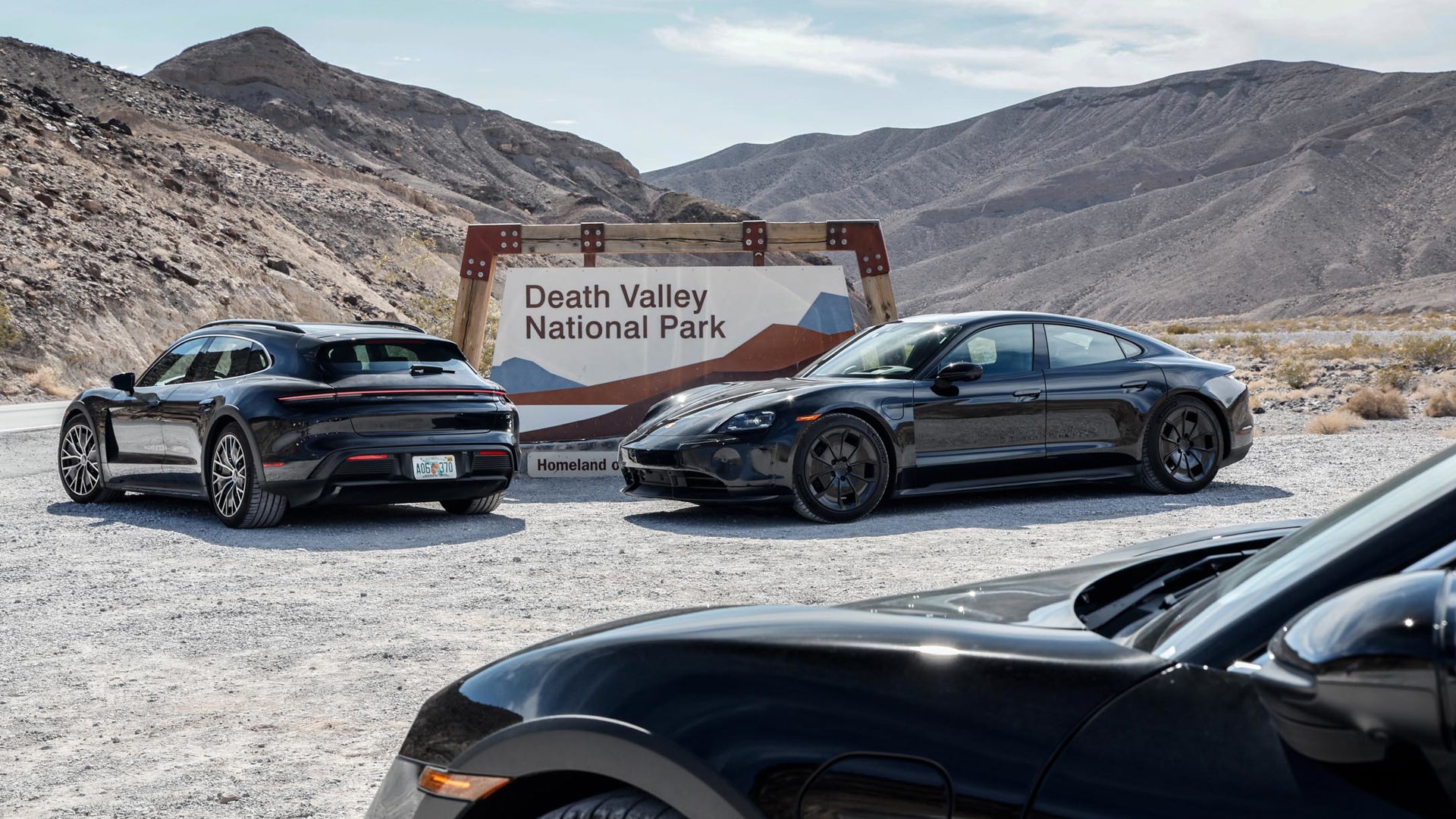
A Better EV
The wheels are also updated with an new optional design that looks pretty snazzy and helps to significantly improve range when coupled with new, lower resistance tires. Compared to last year’s 21-inch Mission E wheels, the new units of the same size can see the Taycan travel about 40 km further on a full charge, according to Porsche.
Beyond the wheels, a lighter overall mass and improved aerodynamics are said to help the new Taycan’s range improve markedly. Porsche claims the base rear-wheel-drive model’s maximum range stretches from 503 km to 678 km, while the Taycan Turbo S is expected to improve from 467 km to 630 km. Those are increases of 35 and 34 per cent, respectively, though it should be noted they’re figures from the World Harmonised Light Vehicle Test Procedure (WLTP) which tends to be more optimistic than those published by Canadian and American authorities. Nevertheless, extending the current models’ range by about a third is impressive.
The new Taycan is better at energy regeneration while driving, too, with recuperation rates increased from 290 kW to 400 kW, plus the battery unit has a higher energy density despite taking up the same space, as capacity grows from 93.4 kWh to 105 kWh.
Quicker Charging
The new Taycan’s 800-volt architecture enables juicing up at blazing speeds. At Porsche’s own chargers at the Weissach facility, we witnessed speeds up to 320 kW. For reference, this would take a Taycan from 10 to 80 per cent in less than 18 minutes. Put another way, in 10 minutes on the plug you can gain up to 315 km of range.
Before getting too excited, note that the number of functional charging stations we encounter here in Canada that can push speeds in excess of 300 kW are sadly few and far between, so better infrastructure here will be needed before truly benefitting from the marvels of Porsche’s engineering.
Even still, improvements are made across the board. Not only has the rate of charge improved, but the new battery can sustain those ultra-fast charge speeds for longer, with higher than 300 kW available for more than five minutes at a time. The new Taycan also reaches fast-charging speeds quicker, with start-up times dropping from 21 seconds to six seconds, and the battery’s optimal charging temperature range is greatly improved, requiring less cooling in hot temperatures, and less pre-heating during the winter.
To put all of this technical info into real world perspective, Porsche claims a road trip between Stuttgart and Barcelona (basically the distance from Halifax to Montreal), would have required five stops in the old Taycan, but only needs three in the new one, resulting in at least a 39-minute time savings for the trip.
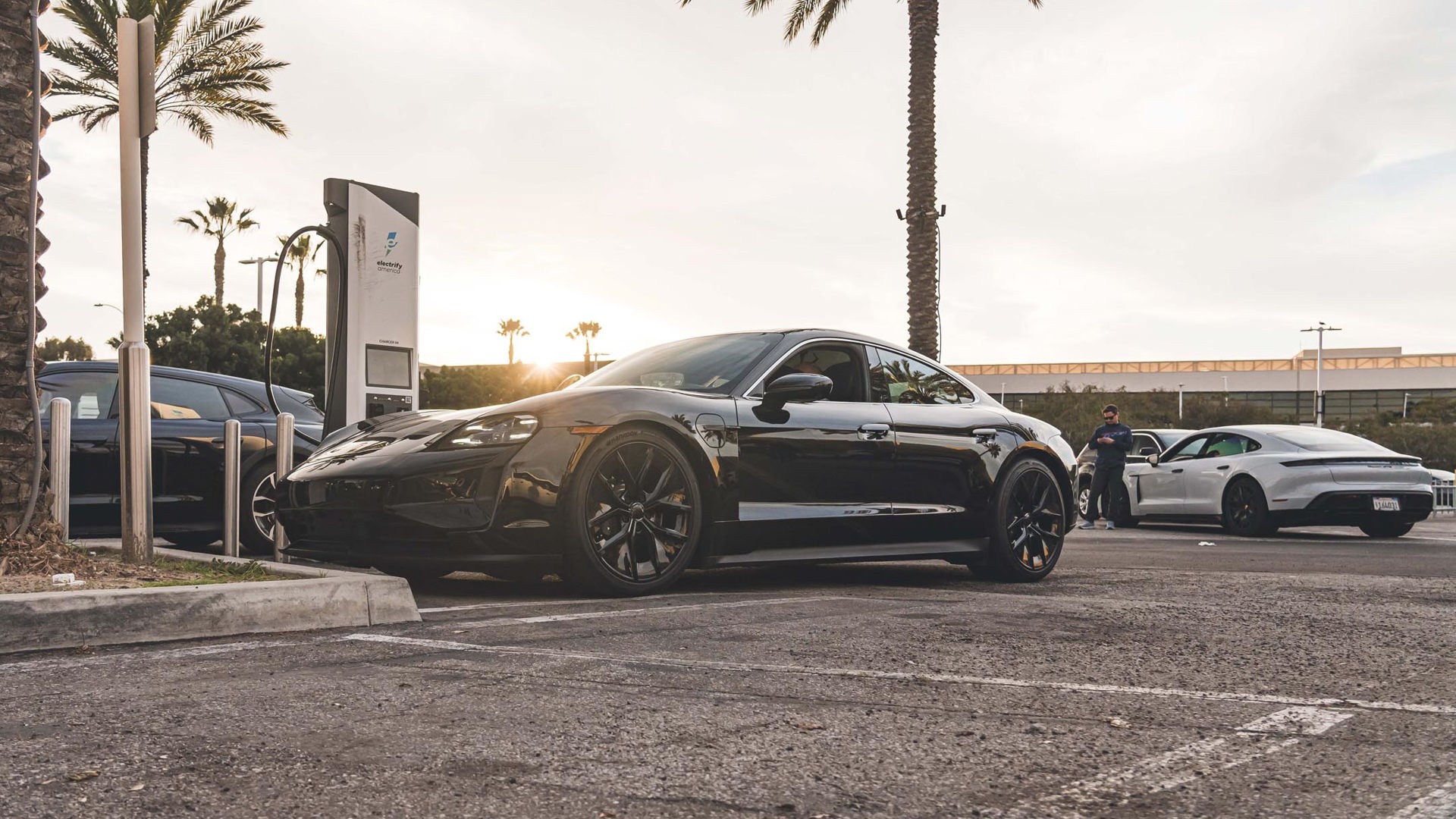
(A Lot) More Power
The existing Taycan was definitive proof that an EV can be a track-ready performance weapon, but that hasn’t stopped Porsche from pouring a quarter of its development resources into improving performance for the second-generation car. The old car is very quick, but the new one is absolutely sizzling. The rear-drive model’s zero-to-100 km/h time drops from 5.4 seconds to 4.8, while the range-topping Turbo S shaves 0.4 seconds, now clocking a 2.4 second blast.
The rear-drive models carry on with 402 hp, but the rear motor is smaller and the car is lighter overall, providing that mild performance bump. The big change is with the Taycan Turbo S that previously delivered 617 hp, plus an overboost bump to 750 hp. The new car dispenses with 764 hp, plus a new push-to-pass button that unleashes 858 hp for 10-second bursts at a time. With launch control employed, the Turbo S can summon a whopping 939 hp and 811 lb-ft of torque.
The engineer piloting me around insisted on demonstrating the push-to-pass on the Autobahn, and nearly rocketed us into slower moving traffic ahead as a result (the brakes work commendably well too, by the way). The launch control was very effectively demonstrated as we left the Weissach security gate, and I can report it’s utterly dizzying in its effect.
New Suspension
There are plenty of astonishingly quick EVs these days, but what impresses more is what’s been done to the Taycan’s suspension. The air suspension carries forward, but it’s now standard equipment and is tuned to provide quicker reactions that improve comfort. It can also let drivers adjust rebound and compression rates separately, and offers greater damping force. Dynamically, the new adaptive air suspension improves handling, stability, and ride control in nearly every circumstance compared with the previous generation’s optional three-chamber setup.
There’s a new active ride system available that enables greater movement and adjustability for each individual corner. While being able to deliver higher handling thresholds than the standard air suspension, the feature’s real benefit comes in terms of comfort. It’s dramatically better at isolating the cabin from bumps and vibrations, but it also noticeably offsets lateral motion, plus pitch and dive when accelerating or braking hard.
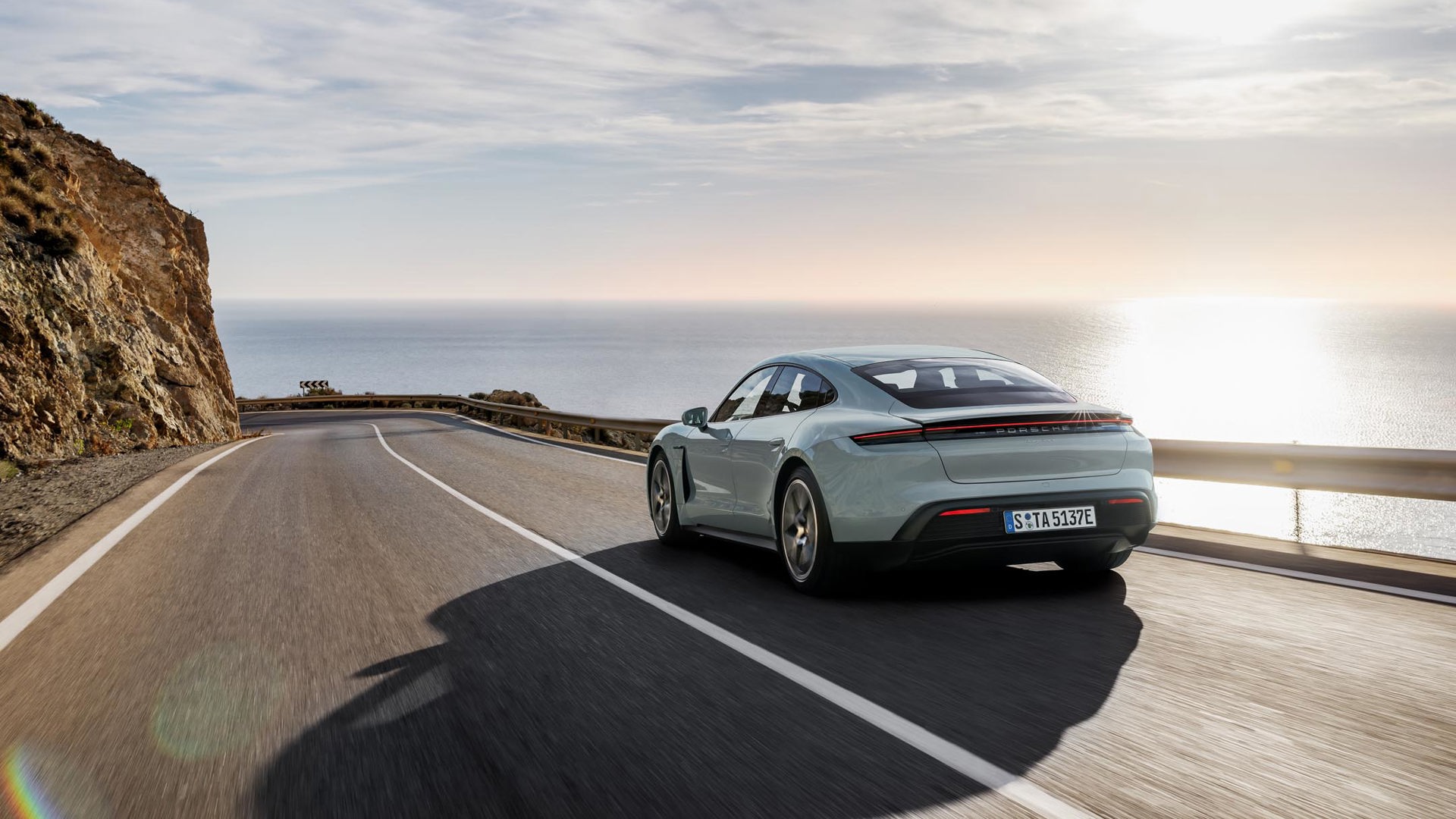
Final Thoughts
We had already deemed the Taycan a real Porsche in our past experiences. Its style, quality, comfort, and performance ensured it was worthy of its coveted Porsche crest, and yet this next generation promises to be superior to its over-achieving predecessor in almost every way. Sitting shotgun with the grinning engineer/chauffeur joyfully chucking the 2025 Porsche Taycan into snowy corners and launching the sleek sedan toward the horizon, it became clear why it’s so impressive: no matter how great the current model is, it’s expected to evolve and improve just like any other Porsche.
